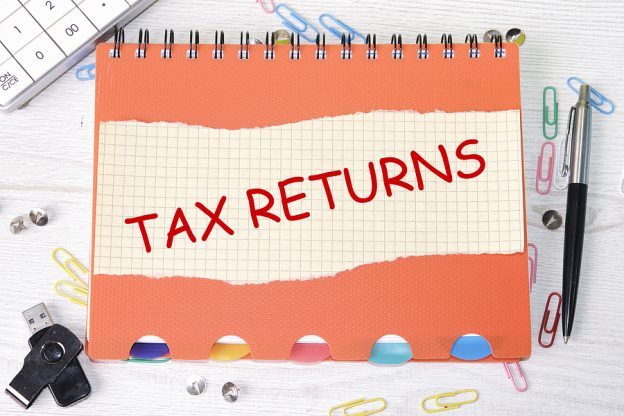
Every year new taxpayers enter the self assessment system. And it can be a bit daunting, especially the first time around. The potential fines for mistakes or missed deadlines adds to the stress of the situation.
There are five regular mistakes that we see happen with self assessment tax returns, especially with first time filers. So here they are, broken down into five ways to make sure your first self assessment tax return is successful.
Allocate preparation time
Its not just a question of filling in a form the day before the deadline. You need to allocate time for two important preparation tasks: registration with HMRC and sorting out your payment method.
Registration with HMRC
You need to allow at least 20 days to register with HMRC. After you apply online, you’ll be sent your Unique Taxpayer Reference (UTR) number. This takes up to 10 days to arrive in the post. Then you’ll be sent an activation code, also in the post. Again, this can take up to the same 10 days to get to you. These are sent separately for security reasons.
You cannot set up your online tax account without your UTR and activation code. And you can’t file your self assessment tax return without your online tax account.
Sometimes HMRC will allow an extended deadline on your tax return filing if you’re late to register. This will be three months from your registration date. But this isn’t a given. And if you don’t get this extension, you’ll be fined separately for late filing and late payment.
Payment Method
Different payments take different lengths of time to process. Its crucial that your tax bill payment is in HMRC’s account by the deadline. This is up to you to sort out.
For example, if you want to pay by direct debit, you need to allow five working days for the payment to land in HMRC’s bank account. It will be classed as a late payment even if you’ve sent it by the deadline, if HMRC haven’t received it.
Include all income streams and keep your evidence
Multiple income streams makes completing your self assessment tax return more complicated. And an increasing number of taxpayers are earning money from more than one source. It all goes on one self assessment tax return.
It’s absolutely crucial that you include everything you earn, as well as your self employed and/or employed earnings. Everything is relevant to HMRC, including:
- Self Employed Income Support Scheme
- Property rental
- Child benefit
- ‘Donations’ made through platforms like Patreon
- Investment or savings income worth more than £10,000
- Dividends from company shares
- Capital gains made from selling valuable assets (profits on their sale)
- Pension
- Commission
- Tips
- Income from abroad
HMRC definitely can check and deliberately failing to include income will be seen as either tax avoidance or tax evasion (both of which are taken very seriously).
The amount and way you’ve earned money defines the type and how much tax you pay.
Evidence
Essentially, all the evidence you need is in your usual business records. Every receipt, invoice, bank statement and P60 supports the information on your tax return. There’s no HMRC prescribed format for your record keeping. But your records must be “accurate, complete and readable.”
You must keep these records for at least five years after the 31st January following the end of the tax year they refer to. But many businesses keep them for much longer. This is because and HMRC investigation, for whatever reason, can go back for 20 years.
Choose the right Accounting Method
There are two accounting methods you can choose from ‘traditional accounting’ and ‘cash basis’.
Cash basis
If you’re a small business or a sole trader, cash basis is probably the best accounting method for you. It means that everything’s based on what actually comes into and goes out of your bank account. You don’t pay tax on money that’s been invoiced, but not received.
Traditional accounting
This accounting method is more appropriate for larger businesses, or those with a more complicated structure. In this case, you record and pay tax on money that’s been invoiced even if you haven’t received the payment yet.
Allowances and expenses
There’s a huge list of tax free allowances that you might be eligible for. You must include everything that’s applicable to you on your self assessment tax return.
HMRC also allow a varied number of work expenses. The way you claim them is different for employees and self employed taxpayers.
If you’re an employee, this means that you can get tax relief on costs you’ve incurred for work. Unless your boss has reimbursed you for those expenses, of course.
If you’re self employed, you take your total expenses away from your profit. This reduces the amount you need to pay tax on.
Get help if you need it to complete your tax return
You don’t have to go through this process by yourself. Get an accountant or tax professional to go through the process with or for you. Maybe you’re fine with everything, apart from working out which tax reliefs and allowances apply to you. That’s fine, get in touch and we’ll sort out that bit. Or if the whole thing is giving you the heebie-jeebies, we can do the whole thing for you. And that includes talking to HMRC on your behalf.
What’s great is that everything to do with your tax position is taken care of on one online form. HMRC’s support is varied and of good quality. And we’ve got several free guides to make sure that even first time filers have all the information they need.
Like most things, the first time you go through the process takes longer. But that’s because its all new. Soon you’ll be one of those blasé business owners who sends their tax return on 6th April. Until then, we’re here to help.





